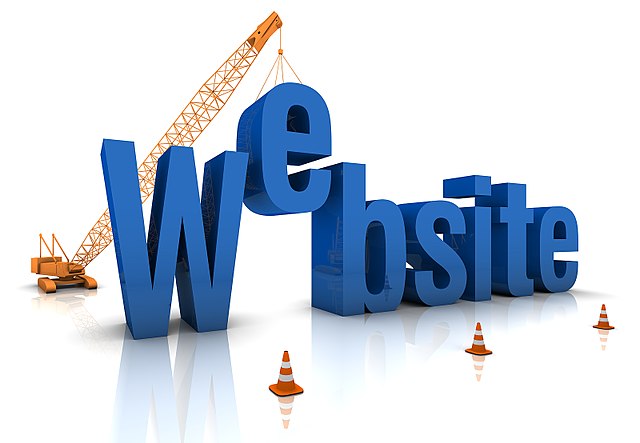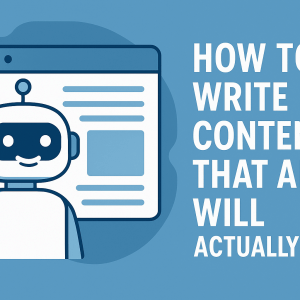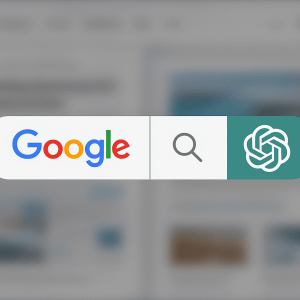Maybe you’re considering building a website, but you’re new to any of this. You don’t even really know where to start. It can be overwhelming for you even to get started if you don’t have a clear list of steps to guide you. Employing someone to guide you through and create your website is a great idea. Learning everything up to and including creating webpages might not be what you want to do. You more likely want to concentrate on the reason for having the website. Whether that is a personal blog, or a company website, or selling products on line.
One thing to remember :
Your website should be an asset working for you, and not just an overhead or cost.
But even finding someone to create your website will entail some understanding of what you want and why you want it. Here are a few steps to get under your belt to answer the question “What do I Need to Start a Website?“. These steps will give you the basis for you build your own website or employ someone else to build a website for you.
Spend just 10 minutes of your time to understand these points:
If you understand this list before you even start, then you will keep your costs under control, you will have a website that works FOR you, and you will reap the benefits.
We will go into each of these elements below to answer the question of “What do I Need to Start a Website?”
1. Define Your Goal
The majority of people don’t start out wanting a website without having an idea of what it would be used for. And likely you are reading this article because you have a goal for your website. Nonetheless, before you go any further, you should really clarify for yourself what you want your website to accomplish. Writing it down helps the mind clarify and confirm what you are aiming for.
For example, if you are a service-based business, your website should accurately communicate what you offer and why a potential customer should hire you. Or maybe you have a product-based business, then your goal is to get people to fill their shopping cart with your products and check out; Even if you’re starting a blog to share your love of cats and dogs, the goal could be to find a few like minds who enjoy reading your posts.
Knowing your goal and fleshing that goal out well, allows all the other steps laid out here to play a role in helping you achieve it. And so it is important that you figure this step out before going any further.
2. Realising Costs
Unfortunately for us all, websites and website development isn’t free. And the complexity of your website will obviously imply a larger cost – not just to create, but to maintain. On average, though, you can expect to pay an upfront cost of around £250 to build a website, with an ongoing cost of around £40 per month to nominally maintain it.
With a very complex website, say with e-commerce support, booking systems, or other supporting or similar complex components, not only are you likely to employ a designer or developer to create your website, the costs can tend towards expecting an upfront charge of around £2,500, with an ongoing cost of £1,000 per year.
Don’t let this shock or worry you though. If you spend time on your defining your goal you might find you can keep these costs low, and possibly take on the job itself.
For a quick reference, we included a table at the bottom of the article [Click here]
3. Choose a Name

This might feel like the simplest of steps, but it can be one of the hardest parts for many people. It sounds simple enough, but it does require making a hard creative decision and it’s easy to get stuck at this step and have a hard time moving forward.
Domain names are unique. So when buying a domain name for your website, there is more than having to think about what sounds good. When you sit to figure it out, your process should include looking up available domain names as you go. The final domain name you register does not need to be the exact name you want your website to have, but it will make it much easier for repeat visitors to find you again when the names match. So it is definitely worth coming up with an original name that you can grab the .com domain for without having to use weird spellings.
Time is important to all of us, even when the time spent is spent on something important. Give yourself a deadline and get it done. Finding a name that’s not 100% perfect is better than not having a final name, or no website.
4. Your Web Hosting
 Web Hosting is WHERE on the internet you will store your website and its pages. You cannot have a website without it being hosted somewhere. Usually you can register your domain name and buy web hosting during the same process. That’s because most hosting plans include a domain name as part of the package initial package. Picking the right hosting plan for your website can be a bit overwhelming. However understanding some basic information on how types of web hosting differ should give you a pretty clear idea of what to go with.
Web Hosting is WHERE on the internet you will store your website and its pages. You cannot have a website without it being hosted somewhere. Usually you can register your domain name and buy web hosting during the same process. That’s because most hosting plans include a domain name as part of the package initial package. Picking the right hosting plan for your website can be a bit overwhelming. However understanding some basic information on how types of web hosting differ should give you a pretty clear idea of what to go with.
Bear in mind the “power” of your hosting package can dramatically affect the responsiveness of your website. We have all been on a website that is so slow that we lose interest. Conversely no one needs a super computer to present 5 basic pages on a hobby website that don’t change much.
If you’re just starting out and your website will be on the smaller side with a minimal following, an affordable shared plan will probably work just fine and you can get one for as little as £4 per month*
Note also, that many packages give you a discount for your first term (usually 12 to 18 months). Thereafter expect the price to at least double.
Finally it is worth mentioning here, there are quite a few “website builders” available dependent on the web hosting package you choose. And to that end we recommend you do a little research on website builders, and specifically WordPress. We have an article worth reading : Why use WordPress
5. Your Design
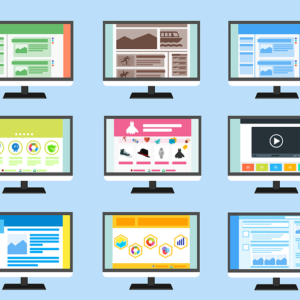
All websites have some form of basic design that someone had to create. Put yourself in the position of a potential visitor. When your website’s design is intuitive and doing its job, your visitor doesn’t necessarily think much about it. But this is a good thing, because someone else did the thinking for you during the design process to make sure the site easily meets visitor needs.
There are several options for designing your website. Your choice is dependent on how involved you want to be and how technical you can be.
- You can hire someone that’s experienced in web design to build you something unique that suits your needs.
- You can use a “website builder” to build it yourself using templates and an intuitive design interface.
- Or you can try to learn web design yourself and build a website from scratch.
Be warned that option 3 won’t be easy if you don’t have any prior experience. To be honest, unless web design is a skillset you’d like to have, this really isn’t necessary in this era of easy-to-use website builders.
6. Your Content
 Much like the web design, you probably never thought about the content of the pages you visit except that they either succeeded or failed in giving you information and responses you wanted. But consider somebody, somewhere had to put those words into a coherent form.
Much like the web design, you probably never thought about the content of the pages you visit except that they either succeeded or failed in giving you information and responses you wanted. But consider somebody, somewhere had to put those words into a coherent form.
Again, you might consider a professional to help here. Not only would a professional create your wording at speed (and therefore saving your time), but also they might have a better more experience perspective of the work, especially if your website’s goal is to sell something. There are many professional website copywriters who know how to develop an appropriate positioning for a business and the appropriate style of writing that would attract your target audience and push them to action with you. And be realistic here. But your own time is costly. So if writing’s not your forte, you could spend a lot of time and effort creating your content without the results that a professional could create.
You might find, if you’re involving a web developer or designer to create your website, they might already have the skills to cover the content of your site. At least for the first pass.
However, if you’re confident enough to write your own content you can save a substantial amount of cash. Even if you employ a Web Designer or Developer, you can still ask them to put your content on the pages.
7. Marketing Plan
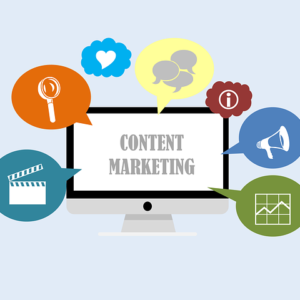 Great…. so you’ve decided on a domain name, bought the hosting, developed your state of the art website. And now all you need to do is sit back and wait for the customers to come to you.
Great…. so you’ve decided on a domain name, bought the hosting, developed your state of the art website. And now all you need to do is sit back and wait for the customers to come to you.
Sorry to say, so far you’ve created something that no one knows about. The next step is to define your marketing plan. Or, possibly more succinct, your Online Marketing Plan. This comes in three layers:
- Search Engine Optimisation (SEO) for organic advertising – ensuring the content of your website, is attractive to the web search engines as well as the human visitor
- Targeting potential clients via Social Media
- Paid Advertising
All three of these can be considered part of your online marketing plan. The first (SEO) giving the basics to drive the others. This requires some forethought to ensure your efforts are not wasted. And with SEO this might make you revisit your content and even redesign some of it. For more about SEO read [this article].
All 3 layers are aimed at helping raise awareness to drive the real traffic to of your website. What is the point of having the best product or blog if no one gets to see what you have. Importantly you must commit to an ongoing review and reinvestment of your marketing efforts. Rome wasn’t built in a day, and the content of the internet that you are competing with is constantly changing.
8. Analytics
 Some people find this final step obvious; and some people only realise it when it is mentioned. Once you’ve progressed through all the previous steps, and your website is up and running. And then you’ve implemented your first pass at the marketing plan. The next step is to monitor, and review your website’s performance.
Some people find this final step obvious; and some people only realise it when it is mentioned. Once you’ve progressed through all the previous steps, and your website is up and running. And then you’ve implemented your first pass at the marketing plan. The next step is to monitor, and review your website’s performance.
Performance in dependent on the context of your website. But generically the performance of your website can be seen as analysing how many visitors you get, where they came from. Also how long they stick around and browse your site, and ultimately did they ACT on anything. If it is an e-commerce website, then maybe that action is about buying a product. For other businesses it might be less tangible and more subtle. But ultimately how do you know?
What's for Free
There’s a great free product out there that every website owner should consider that is absolutely free. Google Analytics is easy even for a novice and one of the first things you should get to grips with before you spend too much effort in your marketing, and at the point when your website is ready to launch. The Google Analytics tool provides rich insights into the users are coming to your website: The numbers, how they found you, repeating visitors, and some demographic information.
The Google Analytics information will give you insight of whether your marketing is working and opportunity for you to tweak your tactics. So cross referencing this with demographics, you will know which types of visitors are likely to take action you’ve guided them into, like request for contact, sign up for emails, or maybe make a purchase. And it should also hint to you those demographics not worth targeting because they will stay on your site only for a short time, and you never see them again. Google Analytics will give you a continuous guide and flow of how to improve and target your audience over time.
9. Summary
In this article trying what you Need to Start a Websitem we have described the loose components you need to review to ensure you are prepared for the journey of creating your own website. We’ve touched on the pros and cons of employing people along the way, and which parts you can or should do yourself.
Building a website is both an great achievement and challenging. But it is not such a great mountain to overcome if you do your homework, and get others involved when you need them. And remember a website isn’t just a single task. IT is a constant process and evolution. Then, once you have launched your website you’ll face a whole new set of challenges, but with the right tools you will enjoy every moment of watching your traffic grow and your business explode.
10. Your Next Step
If you’ve been waiting to start on your journey, remember to take it one step at a time. So for the next step we recommend you check out our Website Checklist for Beginners, here, the article touches on some of the will give you some more tangible tools to get going.
Choosing Web Hosting
If you do choose one of these, please use the links to the right to support our website.
Reference: Average spending on Web Designer
What do I Need to Start a Website?
Here’s some recent expectations of the average spending on a Web Designer based on the style and complexity of your website.
[prices accurate as of November 2022]
Accredited: expertmarket.co.uk
Type of website | Features | Designer cost |
|---|---|---|
Basic |
| £250 – £500 |
Small business |
| £500 – £1,000 |
Ecommerce |
| £1,000 – £2,500 |
Database-driven (banking, architecture sites etc) |
| £3,500 – £10,000+ |
